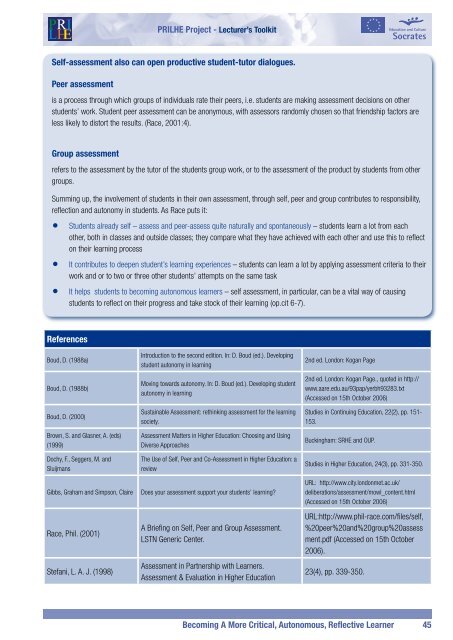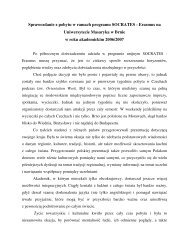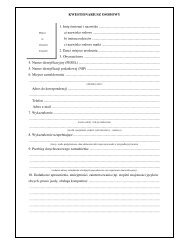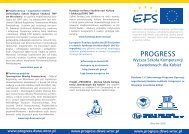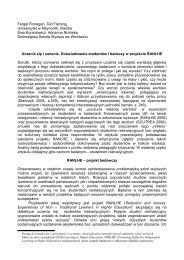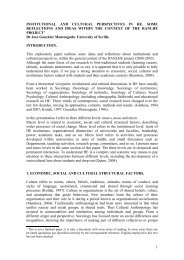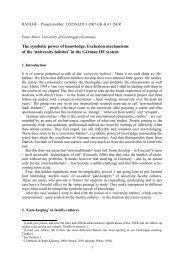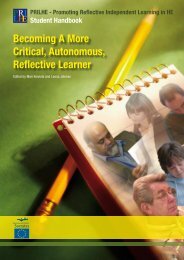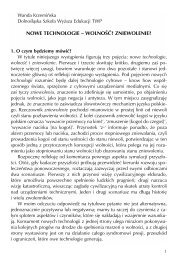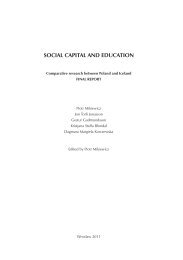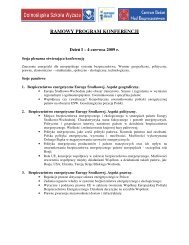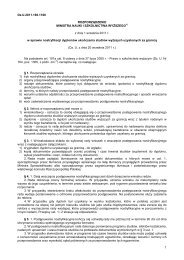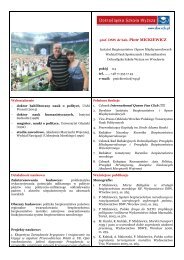Becoming A More Critical, Autonomous, Reflective Learner
Becoming A More Critical, Autonomous, Reflective Learner
Becoming A More Critical, Autonomous, Reflective Learner
You also want an ePaper? Increase the reach of your titles
YUMPU automatically turns print PDFs into web optimized ePapers that Google loves.
PRILHE Project - Lecturer’s Toolkit<br />
Self-assessment also can open productive student-tutor dialogues.<br />
Peer assessment<br />
is a process through which groups of individuals rate their peers, i.e. students are making assessment decisions on other<br />
students’ work. Student peer assessment can be anonymous, with assessors randomly chosen so that friendship factors are<br />
less likely to distort the results. (Race, 2001:4).<br />
Group assessment<br />
refers to the assessment by the tutor of the students group work, or to the assessment of the product by students from other<br />
groups.<br />
Summing up, the involvement of students in their own assessment, through self, peer and group contributes to responsibility,<br />
reflection and autonomy in students. As Race puts it:<br />
•<br />
•<br />
•<br />
Students already self – assess and peer-assess quite naturally and spontaneously – students learn a lot from each<br />
other, both in classes and outside classes; they compare what they have achieved with each other and use this to reflect<br />
on their learning process<br />
It contributes to deepen student’s learning experiences – students can learn a lot by applying assessment criteria to their<br />
work and or to two or three other students’ attempts on the same task<br />
It helps students to becoming autonomous learners – self assessment, in particular, can be a vital way of causing<br />
students to reflect on their progress and take stock of their learning (op.cit 6-7).<br />
References<br />
Boud, D. (1988a)<br />
Boud, D. (1988b)<br />
Boud, D. (2000)<br />
Brown, S. and Glasner, A. (eds)<br />
(1999)<br />
Dochy, F., Seggers, M. and<br />
Sluijmans<br />
Gibbs, Graham and Simpson, Claire<br />
Race, Phil. (2001)<br />
Stefani, L. A. J. (1998)<br />
Introduction to the second edition. In: D. Boud (ed.). Developing<br />
student autonomy in learning<br />
Moving towards autonomy. In: D. Boud (ed.). Developing student<br />
autonomy in learning<br />
Sustainable Assessment: rethinking assessment for the learning<br />
society.<br />
Assessment Matters in Higher Education: Choosing and Using<br />
Diverse Approaches<br />
The Use of Self, Peer and Co-Assessment in Higher Education: a<br />
review<br />
Does your assessment support your students’ learning<br />
A Briefing on Self, Peer and Group Assessment.<br />
LSTN Generic Center.<br />
Assessment in Partnership with <strong>Learner</strong>s.<br />
Assessment & Evaluation in Higher Education<br />
2nd ed. London: Kogan Page<br />
2nd ed. London: Kogan Page., quoted in http://<br />
www.aare.edu.au/93pap/yerbh93283.txt<br />
(Accessed on 15th October 2006)<br />
Studies in Continuing Education, 22(2), pp. 151-<br />
153.<br />
Buckingham: SRHE and OUP.<br />
Studies in Higher Education, 24(3), pp. 331-350.<br />
URL: http://www.city.londonmet.ac.uk/<br />
deliberations/assessment/mowl_content.html<br />
(Accessed on 15th October 2006)<br />
URL:http://www.phil-race.com/files/self,<br />
%20peer%20and%20group%20assess<br />
ment.pdf (Accessed on 15th October<br />
2006).<br />
23(4), pp. 339-350.<br />
<strong>Becoming</strong> A <strong>More</strong> <strong>Critical</strong>, <strong>Autonomous</strong>, <strong>Reflective</strong> <strong>Learner</strong> 45


